At PetsCareWorld, we are dedicated to providing you with the latest trends and expert insights to help you create awe-inspiring underwater landscapes in your aquarium.
25 Best Aquascaping Ideas
In this article, we have curated a collection of the 25 best aquascaping ideas, accompanied by detailed instructional guides, to ignite your creativity and take your aquascaping endeavors to new heights. Let’s dive in and explore these stunning aquascapes together!
Serene Zen Garden
Achieve inner peace with a Zen-inspired aquascape that combines minimalism and tranquility. Create a harmonious arrangement using smooth stones, delicate plants like Anubias, and a few carefully placed bonsai trees. Emphasize simplicity and balance to evoke a sense of serenity in your underwater oasis.
Creating a Serene Zen Garden
Minimalistic Design:
- Embrace simplicity and clean lines.
- Use a limited color palette, often focused on natural tones.
Rock and Sand Arrangement:
- Arrange rocks in a balanced, asymmetrical manner.
- Use fine sand to create ripples or patterns, symbolizing water or waves.
Plants:
- Choose slow-growing, low-maintenance plants like mosses, Anubias, and Java fern.
- Place them sparingly, creating open spaces to evoke tranquility.
Focal Point:
- Introduce a prominent focal point, like a larger rock or a piece of driftwood.
- This focal point should draw the eye and create a sense of harmony.
Negative Space:
- Incorporate negative space as a key design element.
- It enhances the feeling of calm and spaciousness.
Subtle Decor:
- Consider adding small, meaningful elements like miniature statues or lanterns.
- Keep it subtle to maintain the overall minimalistic feel.
Lighting:
- Use soft, subdued lighting to mimic natural sunlight filtering through trees.
- Avoid harsh or bright lights that disrupt the serene atmosphere.
Fish Selection:
- Choose peaceful and non-invasive fish species.
- Keep the fish population low to maintain a tranquil environment.
Maintenance:
- Regular pruning and trimming to keep plants in check.
- Perform water changes and equipment maintenance as needed.
Mindful Arrangement:
- As you arrange elements, focus on balance, harmony, and a sense of calm.
- The goal is to create a miniature representation of nature that promotes relaxation.
Cleanliness:
- Keep the tank and its surroundings clean.
- Remove any debris or dead plant material promptly.
Patience:
- Allow the aquascape to mature over time.
- Patience is essential for the plants to grow and the overall aesthetics to develop fully.
Remember, the key to a successful Zen garden aquascape is to create an environment that encourages relaxation, contemplation, and a connection with nature.
Lush Jungle Paradise
Immerse yourself in the lush greenery of a tropical jungle with this aquascape idea. Incorporate vibrant plants such as Amazon swords, Java moss, and Cryptocoryne to create a dense, jungle-like atmosphere. Add driftwood and rock formations to mimic fallen trees and hidden caves, providing a natural habitat for your aquatic creatures.
Creating a Lush Jungle Paradise Aquascape
Diverse Plant Selection:
- Choose a variety of lush, vibrant aquatic plants.
- Include tall background plants, mid-level plants, and carpeting plants to create layers of greenery.
Natural Driftwood and Roots:
- Integrate gnarled driftwood pieces or intricate root structures.
- Mimic the appearance of fallen trees and submerged jungle roots.
Rich Substrate:
- Use nutrient-rich substrate to support plant growth.
- Incorporate dark substrates to enhance the lush, forest floor look.
Foreground Plants:
- Plant carpeting species like dwarf hair grass or Monte Carlo.
- Create a sense of depth and texture in the foreground.
Tall Background Plants:
- Include species like the Amazon sword, Vallisneria, or large-stem plants.
- These provide a dense backdrop, emulating the dense vegetation of a jungle.
Floating Plants:
- Add floating plants like water lettuce or Amazon frogbit.
- These provide shade, reduce light intensity, and create a more natural feel.
Hardscape Features:
- Add rocks sparingly for a natural look.
- Position them to create hiding spots or to accentuate the planting layout.
Fish and Inhabitants:
- Select fish species that thrive in a community setting.
- Include colorful, peaceful fish that complement the lush theme.
Lighting:
- Use full-spectrum LED lights to replicate natural sunlight.
- Adjust the lighting intensity to promote plant growth while preventing algae blooms.
Regular Pruning and Maintenance:
- Trim plants regularly to maintain the jungle appearance.
- Remove dead leaves and any excess growth.
Natural Filtration:
- Opt for a balanced filtration system to maintain water quality.
- Consider the use of live plants as part of the filtration process.
Sense of Mystery:
- Create hidden paths and spaces within the aquascape.
- Use plants and hardscape elements to encourage exploration and a sense of wonder.
The goal of a lush jungle paradise aquascape is to recreate the captivating beauty and diversity of tropical rainforest within your aquarium, providing a stunning and immersive experience.
Mystical Fairy Garden
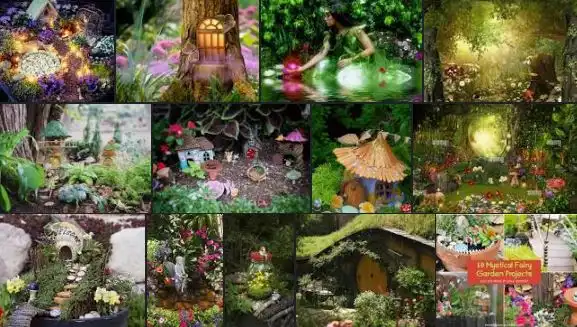
Capture the enchantment of a fairy tale world with a whimsical aquascape. Combine colorful plants like Ludwigia repens and Rotala indica with miniature figurines, creating a magical scene within your aquarium. Install LED lighting to enhance the ethereal ambiance and bring your fairy garden to life.
Creating a Mystical Fairy Garden Aquascape
Enchanted Design:
- Embrace a whimsical and magical ambiance.
- Incorporate elements that evoke a sense of fantasy and wonder.
Small-Scale Features:
- Use miniature figurines, fairy houses, or magical creatures.
- These small-scale elements bring the fairy garden theme to life.
Plant Selection:
- Choose delicate, ethereal plants like aquatic ferns, mosses, and Anubias.
- Opt for plants with intricate shapes and textures, resembling a fairyland.
Fairy Pathways:
- Create winding paths using tiny pebbles or fine sand.
- These pathways can lead to hidden corners or magical focal points.
Driftwood and Stones:
- Use driftwood or stones to add a natural feel.
- Arrange them to resemble mystical landscapes or mysterious forests.
Subdued Lighting:
- Use soft, warm lighting to create a mystical atmosphere.
- Avoid bright lights that might disrupt the enchanting vibe.
Floating Plants:
- Incorporate floating plants like water sprite or frogbit.
- They can simulate floating islands or magical gardens on the water’s surface.
Plenty of Hiding Spots:
- Arrange plants and decor to create hiding spots for the imaginary fairies.
- These spots add depth and intrigue to the aquascape.
Color Palette:
- Stick to a dreamy, pastel color scheme.
- Blues, pinks, purples, and soft greens can evoke a fairy tale feel.
Balance and Composition:
- Focus on creating a balanced arrangement of elements.
- Maintain a harmonious composition that feels magical yet not cluttered.
Fantasy Fish and Inhabitants:
- Consider adding small, colorful fish that complement the theme.
- Choose species that won’t disturb the fairy garden ambiance.
Regular Maintenance:
- Keep the plants and decor well-maintained.
- Prune as needed to prevent overgrowth while preserving the fairy garden’s charm.
Imagination and Creativity:
- Let your creativity run wild as you design your mystical fairy garden.
- Imagine the fairies that might inhabit this magical realm.
The goal of a mystical fairy garden aquascape is to transport viewers to a world of enchantment, where the boundaries between reality and fantasy blur, and the beauty of the underwater realm captivates the imagination.
Majestic Mountain Range
Transport your aquarium to the lofty peaks of a mountain range with this breathtaking aquascape idea. Utilize rocky structures, complemented by tall plants such as Vallisneria, to emulate towering mountains. Incorporate a flowing carpet of Monte Carlo or dwarf hairgrass to mimic lush valleys nestled between the peaks.
Creating a Majestic Mountain Range Aquascape
Elevated Terrain:
- Use rocks, stones, and driftwood to simulate rugged mountain terrain.
- Create varying heights and slopes to mimic the majestic peaks and valleys.
Plant Selection:
- Choose hardy, aquatic plants that can thrive in a rocky environment.
- Opt for species that can grow on and around the “mountains.”
Moss and Ground Cover:
- Utilize mosses and carpeting plants to replicate alpine meadows.
- These plants provide texture and soften the hardscape elements.
Vertical Accent Plants:
- Include tall, slender plants like Vallisneria or Rotala to resemble towering trees or vegetation near the mountain’s base.
Color Palette:
- Use natural, earthy colors for the substrate, rocks, and plant choices.
- Hues of brown, gray, and green evoke a mountainous atmosphere.
Aquatic Life:
- Select fish and invertebrates that inhabit rocky or mountain stream environments.
- Look for species that appreciate hiding spots or crevices.
Aerial Roots:
- Allow some plants to grow aerial roots, enhancing the mountainous look.
- These roots can dangle down from the rocks, resembling trees clinging to the slopes.
Focal Point:
- Create a central focal point, like a prominent rock formation or a driftwood feature.
- This point of interest adds drama to the aquascape, drawing the eye.
Natural Arrangement:
- Mimic the irregular patterns of nature when placing rocks and hardscape elements.
- Avoid overly symmetrical layouts for a more realistic mountain range appearance.
Subdued Lighting:
- Use gentle, diffused lighting to evoke the soft glow of sunlight on a mountain landscape.
- Avoid overly bright or harsh lights.
Maintenance and Pruning:
- Regularly trim plants to prevent overgrowth.
- Maintain the rocks and hardscape, keeping them clean and free of algae.
Creating Depth:
- Use layers of plants, rocks, and substrate to give the illusion of depth.
- This creates a sense of vastness and makes the aquascape more engaging.
The goal of a majestic mountain range aquascape is to capture the grandeur and beauty of a mountain landscape within the confined space of an aquarium, evoking a sense of awe and wonder.
Underwater Cityscape
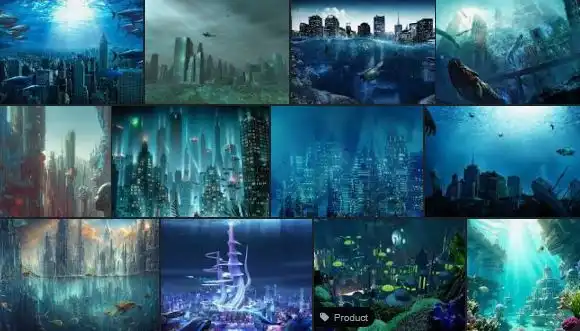
Unleash your creativity with an aquascape that emulates a bustling underwater metropolis. Combine architectural elements like ceramic buildings and bridges with aquatic plants, creating a visually striking urban landscape. Use carpeting plants like Hemianthus callitrichoides to represent parks and green spaces within your underwater city.
Crafting an Underwater Cityscape Aquascape
Architectural Elements:
- Incorporate miniature buildings, skyscrapers, or city structures as focal points.
- Use aquarium-safe materials or decor designed for underwater use.
Substrate Selection:
- Choose a substrate that resembles the seafloor or urban waterfront.
- Options like sand, gravel, or a mix of both can mimic a coastal setting.
Artificial Structures:
- Introduce artificial caves, tunnels, or bridges to mimic urban features.
- These structures can provide hiding spots for fish and add a touch of realism.
Plant Selection:
- Opt for hardy aquatic plants, focusing on those that resemble sea grass or coastal vegetation.
- Balance the number of plants to maintain the cityscape theme.
Coral and Decor:
- Add artificial coral or reef-like structures to create an underwater ambiance.
- Incorporate colorful decor to simulate the vibrant life in a bustling underwater city.
Fish Selection:
- Choose fish species that thrive in community setups.
- Consider small, peaceful species that won’t disturb the cityscape or each other.
Aerial Elements:
- Attach floating plants or create hanging planters to simulate “floating” gardens.
- These elements can add depth and interest to the underwater scene.
Aquarium Background:
- Use a custom or printed background that depicts an underwater city skyline or coastal scene.
- This adds depth and context to the aquascape.
Lighting Effects:
- Use LED lights with adjustable colors to create a dynamic and captivating scene.
- Play with lighting to emphasize different areas of the cityscape.
Air Bubbles and Airstones:
- Introduce small air bubbles or airstones to create a sense of movement.
- This adds life to the underwater city, as if it’s truly alive.
Maintenance and Cleanup:
- Regularly clean the decor to prevent algae buildup.
- Trim or prune plants as needed to maintain the city’s appearance.
Imagination and Detail:
- Pay attention to the small details, like adding tiny cars, people, or sea creatures.
- Let your creativity flow to bring the underwater city to life.
The goal of an underwater cityscape aquascape is to transport viewers to an imaginary world where they can marvel at the beauty and intricacy of an underwater metropolis.
Seaside Escape
Bring the beauty of the ocean to your aquarium with a captivating seaside aquascape. Incorporate fine sand as the substrate, along with rocks and driftwood adorned with colorful corals and anemones. Enhance the coastal vibe by introducing marine plants like Halimeda and Caulerpa, reminiscent of a vibrant coral reef.
Designing a Seaside Escape Aquascape
Coastal Landscape:
- Recreate a coastal setting with elements like sand, rocks, and driftwood.
- Use natural colors to mimic the serene beauty of a beach.
Sand Substrate:
- Use fine sand as the base, resembling a sandy shoreline.
- Arrange it to create slopes and gentle dunes to add depth.
Rock and Seashell Decor:
- Integrate small rocks and seashells to capture the feel of a seaside environment.
- These elements also provide hiding spots for fish and contribute to the aesthetics.
Plant Selection:
- Choose hardy aquatic plants with a beachy vibe, like Vallisneria or cryptocorynes.
- Add sparse plants to mimic coastal vegetation while keeping an open feel.
Driftwood and Root Features:
- Use driftwood or artificial root structures to simulate submerged tree trunks or coastal vegetation.
- These features add a touch of realism to the escape.
Fish and Inhabitants:
Aerial Elements:
- Add floating plants like frogbit or water lettuce to resemble natural debris floating near the shore.
- These plants create a sense of intimacy and provide shade.
Beachside Details:
- Place tiny decor items like beach chairs, a mini lifeguard tower, or a sandcastle.
- These subtle additions can enhance the seaside theme.
Natural Lighting:
- Use soft, natural lighting to replicate the sunlight filtering through the water at the shore.
- This lighting complements the tranquil ambiance of a seaside escape.
Sea Breeze Effects:
- Introduce gentle water movement to simulate a sea breeze.
- This can be achieved with a low-flow filter or by placing air stones strategically.
Maintenance and Pruning:
- Trim plants and remove debris regularly to maintain the beach-like appearance.
- Keep the sand substrate clean to prevent algae or waste buildup.
Relaxing and Calm:
- Focus on creating a peaceful atmosphere that evokes the feeling of a quiet day at the beach.
- Let the aquascape serve as a tranquil escape for both you and your fish.
The goal of a seaside escape aquascape is to bring the beauty and tranquility of a coastal scene into your aquarium, allowing you to enjoy a calming and scenic slice of the ocean’s charm.
Minimalistic Elegance
Embrace the allure of minimalism with a clean and elegant aquascape. Focus on negative space and simplicity, utilizing a single focal point such as a large, eye-catching plant or an artistic arrangement of rocks. Enhance the minimalist aesthetic by using a simple color palette, often featuring shades of green and white.
Achieving Minimalistic Elegance in Your Aquascape
Clean Design:
- Focus on simple, clean lines and a clutter-free layout.
- Use a minimal number of elements to create a serene and elegant appearance.
Subtle Color Palette:
- Choose a limited, harmonious color scheme, often with neutral or muted tones.
- A restrained palette contributes to the elegance of the aquascape.
Plant Selection:
- Opt for a few select species that are low-maintenance and complement the minimalistic theme.
- Slow-growing plants like Anubias, Java fern, or mosses work well.
Negative Space:
- Embrace empty space as an essential part of the design.
- Allow areas of the aquarium to remain free of plants and decor for a clean look.
Focal Point:
- Create a single striking focal point in the aquascape.
- It could be a well-positioned rock, a unique piece of driftwood, or a meticulously placed plant.
Hardscape Elements:
- Use minimal but impactful hardscape elements like stones or carefully chosen wood pieces.
- These should enhance the simplicity and elegance of the design.
Balance and Symmetry:
- Aim for a balanced composition, often with a touch of symmetry.
- Balanced arrangements evoke a sense of calm and elegance.
Low Fish Population:
- Keep the number of fish minimal, allowing them to move freely and not overpower the aquascape.
- Peaceful and small species work best.
High-Quality Equipment:
- Use top-quality equipment that’s efficient, reliable, and visually unobtrusive.
- This maintains a clean and elegant aesthetic.
Proper Lighting:
- Utilize lighting to accentuate minimalistic elegance.
- Soft, subtle lighting enhances the overall ambiance.
Regular Maintenance:
- Perform regular maintenance to keep plants and equipment in excellent condition.
- Trim plants and remove debris to maintain a clean appearance.
Patience and Detail:
- Pay attention to small details to achieve a refined look.
- Allow the aquascape to develop over time, practicing patience for optimal results.
The goal of a minimalistic elegance aquascape is to create a sophisticated, refined, and peaceful environment that showcases the beauty of simplicity and thoughtful design.
Ancient Ruins
Embark on an archaeological journey with an aquascape that depicts ancient ruins beneath the water’s surface. Position moss-covered rocks and remnants of broken columns to create an atmospheric scene. Add plants like Anubias and Java fern to simulate the lush growth that reclaims these forgotten underwater structures.
Creating an Ancient Ruins Aquascape
Rustic Architecture:
- Use carefully chosen hardscape elements like aged stones, weathered wood, or ancient-looking structures.
- These elements create the illusion of ancient ruins underwater.
Aged Substrate:
- Opt for a substrate that resembles weathered soil or ancient cobblestones.
- This adds to the historical and rustic ambiance.
Plant Selection:
- Choose hardy plants with a “prehistoric” vibe, such as Anubias or Java ferns.
- Keep the plant arrangement simple and sparse to emphasize the ruins.
Underwater Mosses:
- Utilize aquatic mosses to mimic the overgrown, abandoned look of ancient structures.
- Moss-covered rocks or wood can add a sense of age and mystery.
Focal Point:
- Create a central focal point resembling a grand ancient structure or monument.
- This draws attention and gives the aquascape a dramatic touch.
Inhabitants:
- Consider fish species that complement the theme, such as bottom-dwelling or cryptic species.
- Choose fish that won’t disturb the ruins or each other.
Aged Decor:
- Introduce relics, statues, or artifacts in the aquascape.
- These items can convey a sense of history and add intrigue.
Subdued Lighting:
- Use low-intensity lighting to evoke the muted ambiance of an ancient, sun-dappled environment.
- Avoid bright lights that might detract from the ruins’ mystique.
Aquarium Background:
- Select a background that depicts an underwater archaeological site or a jungle-covered temple.
- This adds depth and context to the ancient ruins theme.
Natural Algae Growth:
- Allow controlled algae growth on some hardscape elements.
- It can enhance the aged appearance, making the ruins look more authentic.
Maintenance:
- Regularly clean the decor and hardscape to prevent excessive algae or detritus buildup.
- Trim plants as needed to maintain the ancient ruins’ appearance.
Imagination and Storytelling:
- Let your imagination run wild with the history of the ancient ruins.
- Create a backstory or imagine the culture that once thrived around these underwater relics.
The goal of an ancient ruins aquascape is to transport viewers to a time when civilizations flourished and have since been reclaimed by nature. The intrigue and sense of history make this theme captivating and mysterious.
Enchanted Forest
Enter a mystical realm with an aquascape that mirrors the beauty of an enchanted forest. Combine tall, slender plants like Echinodorus and Vallisneria with winding branches and driftwood. Add a touch of magic with the soft glow of LED lights that resemble sunlight filtering through the dense foliage.
Crafting an Enchanted Forest Aquascape
Magical Ambiance:
- Create an otherworldly atmosphere with a touch of mystery and wonder.
- Imagine a place where fantasy meets nature.
Tall Background Plants:
- Select tall, lush plants that resemble the canopy of a forest.
- Use species like Amazon sword, Vallisneria, or taller stem plants.
Driftwood and Roots:
- Incorporate twisted driftwood or intricate root structures.
- These elements simulate the gnarled trees and roots found in mystical forests.
Plant Layers:
- Arrange plants in layers to mimic the undergrowth of a forest.
- Use carpeting plants in the foreground, medium-sized plants, and taller background plants.
Moss and Ferns:
- Include mosses and ferns to create a dense, enchanted look.
- Attach mosses to the hardscape or let them form “moss carpets.”
Natural Paths:
- Create pathways through the aquascape using sand or fine gravel.
- These paths add a sense of exploration and wonder.
Aerial Roots:
- Allow plants like Java ferns to grow aerial roots, giving the aquascape a mystical touch.
- The roots can drape down, resembling forest vines.
Fairy Tale Decor:
- Add miniature fairy tale elements, like tiny castles, bridges, or mythical creatures.
- These decorations enhance the enchanted forest theme.
Subdued Lighting:
- Use soft, warm lighting to evoke the magical glow of an enchanted forest.
- Lighting can play a significant role in creating the desired ambiance.
Peaceful Inhabitants:
- Choose calm and colorful fish that complement the theme.
- Consider small fish like tetras, gouramis, or rasboras.
Regular Pruning:
- Maintain the plants by trimming and pruning as needed.
- Ensure that the aquascape retains the enchanted forest appearance.
Imagination and Creativity:
- Let your creativity run wild in designing this magical realm.
- Imagine the stories and creatures that inhabit this enchanted forest.
The goal of an enchanted forest aquascape is to transport viewers to a world of enchantment, where the boundaries between reality and fantasy blur, and the beauty of the underwater realm captivates the imagination.
Futuristic Oasis

Transport your aquarium to the future with a futuristic oasis aquascape. Incorporate sleek and geometric elements such as acrylic structures and metallic accents. Utilize innovative lighting techniques, like LED strips with customizable colors, to create a vibrant and high-tech atmosphere.
Designing a Futuristic Oasis Aquascape
Sleek and Modern Design:
- Embrace clean lines, geometric shapes, and a minimalist approach.
- Use modern decor and equipment to create a futuristic feel.
Contrasting Elements:
- Combine sleek hardscape materials like glass or polished stone with natural elements.
- Create a visual contrast between the futuristic and the organic.
Artificial Structures:
- Incorporate futuristic architectural elements or structures like mini skyscrapers or abstract sculptures.
- These elements give the impression of a high-tech oasis.
High-Quality Equipment:
- Use advanced filtration systems, LED lighting, and other modern aquarium technology.
- Ensure the equipment is efficient and complements the futuristic theme.
Plant Selection:
- Opt for plants with a unique, space-age appearance, like aquatic “moss balls” (Marimo) or certain colorful stem plants.
- Keep the plant selection simple and focused on complementing the overall futuristic aesthetic.
Underwater Lighting Effects:
- Use programmable LED lights to create dynamic, futuristic lighting effects.
- Mimic the look of neon lights or create a shifting color spectrum.
Aquarium Background:
- Choose a backdrop that depicts a futuristic city skyline, a high-tech laboratory, or a cosmic scene.
- The background adds depth and context to the oasis.
Minimal Fish Population:
- Keep the number of fish minimal and select species that have a high-tech or otherworldly appearance.
- Consider small, unique species that fit the futuristic theme.
Space-Age Decor:
- Add futuristic decor pieces, like metallic ornaments or abstract art.
- These elements enhance the futuristic oasis concept.
Maintenance and Pruning:
- Regularly trim and prune plants to maintain a clean, modern appearance.
- Keep the decor and equipment well-maintained for a polished look.
Imagination and Innovation:
- Allow your creativity to shine in imagining what a futuristic oasis might look like.
- Incorporate innovative ideas and new technology to enhance the futuristic vibe.
The goal of a futuristic oasis aquascape is to create a captivating, high-tech, and visually stunning environment that transports viewers to a futuristic world where nature and technology seamlessly blend into a harmonious oasis.
Coral Garden Wonderland
Dive into the mesmerizing world of vibrant corals with a stunning coral garden aquascape. Choose a selection of hard and soft corals to create a diverse and colorful underwater ecosystem. Provide ample flow and lighting to mimic the conditions necessary for coral growth, and watch as your aquarium transforms into a living masterpiece.
Crafting a Coral Garden Wonderland Aquascape
Coral-Centric Design:
- Emphasize the beauty and diversity of coral colonies as the main focus.
- Choose a variety of coral species with different colors, shapes, and growth patterns.
Reef Rockwork:
- Create a realistic reef structure using live rock or artificial reef inserts.
- Arrange the rocks to provide plenty of nooks and crannies for coral placement.
Live Coral Selection:
- Research and select corals that are suitable for your tank’s parameters and lighting.
- Consider both hard and soft corals to add variety to the garden.
Aquatic Plants:
- Use only low-light-tolerant plants to prevent overshadowing the corals.
- Consider algae-resistant plants like Java moss or small anemones.
Colorful Substrate:
- Opt for a bright, sandy substrate to reflect light and enhance the coral’s vibrant colors.
- This substrate can create a lively, beach-like backdrop.
Fish Selection:
- Choose fish that are compatible with the coral species and won’t disrupt the coral garden.
- Consider smaller, reef-safe fish like clownfish, gobies, or wrasses.
Proper Lighting:
- Invest in high-quality reef-specific lighting to support coral health and growth.
- Adjust the lighting spectrum and intensity based on the needs of the coral species.
Water Parameters:
- Maintain stable water parameters, especially temperature, salinity, and pH.
- Regularly test and make adjustments as needed to ensure the health of the coral garden.
Coral Placement:
- Position corals at different heights and orientations to create a visually dynamic garden.
- Leave space for corals to grow and expand over time.
Water Flow:
- Install appropriate water circulation pumps to simulate natural reef currents.
- Adequate water flow helps corals obtain nutrients and oxygen.
Regular Maintenance:
- Perform regular water changes and clean the glass to prevent algae growth.
- Prune corals if necessary to maintain a balanced and healthy coral garden.
Respect for Nature:
- Ensure all corals are sustainably sourced and legally acquired.
- Practice ethical reef-keeping to protect the fragile marine ecosystem.
The goal of a coral garden wonderland aquascape is to replicate the mesmerizing beauty of a vibrant coral reef within your aquarium, providing a stunning and immersive experience while promoting the conservation of these vital marine ecosystems.
Forest Stream
Recreate the tranquil ambiance of a serene forest stream within your aquarium. Arrange rocks to form a meandering path, simulating the flow of water. Accentuate the scene with hardy plants like Java moss and Ferns, creating a lush and refreshing environment for your aquatic inhabitants.
Designing a Forest Stream Aquascape
Natural Flow:
- Mimic the meandering path of a forest stream with the layout of rocks and substrate.
- Create gentle slopes and varying depths to evoke the feel of a flowing stream.
Streambed Substrate:
- Use a combination of fine sand and small pebbles for the streambed.
- Arrange the substrate to simulate the bottom of a forest stream.
Rocks and Boulders:
- Introduce larger rocks and boulders to form the stream banks and provide hiding spots.
- These rocks can create cascades, rapids, and natural stream features.
Aquatic Plants:
- Select plants that thrive along stream banks, like Cryptocorynes, Vallisneria, or Anubias.
- Position them near the edges of the “stream” to resemble plants growing along the water.
Riparian Vegetation:
- Add emergent plants like Dwarf Sagittaria or Aponogeton species.
- These plants grow partially submerged and create a transition between the stream and the terrestrial environment.
Aerial Roots:
- Allow certain plants to grow aerial roots, especially those near the water’s edge.
- These roots can extend into the stream, adding a touch of realism.
Fish Selection:
- Choose fish species that inhabit forest streams, such as small tetras, rasboras, or loaches.
- Consider peaceful fish that enjoy the current and have a natural appearance.
Subdued Lighting:
- Use soft, dappled lighting to replicate the gentle sunlight filtering through the forest canopy.
- This lighting sets the calming and natural tone of the forest stream.
Water Flow:
- Implement a water pump or filter with adjustable flow to simulate the current of a stream.
- A gentle flow can create a realistic stream effect and keep the water oxygenated.
Aquarium Background:
- Choose a background that depicts a forest scene or a tranquil stream in the woods.
- The background adds depth and enhances the natural ambiance.
Regular Maintenance:
- Perform regular water changes and clean the streambed to prevent debris buildup.
- Trim and prune plants as needed to maintain the forest stream’s appearance.
Attention to Detail:
- Focus on recreating the intricate details of a forest stream, such as the arrangement of rocks, plants, and the overall layout.
- The more realistic the setup, the more captivating the forest stream aquascape becomes.
The goal of a forest stream aquascape is to transport viewers to the serene tranquility of a shaded forest stream, capturing the beauty of this natural environment within your aquarium.
Desert Oasis
Craft an arid and captivating desert oasis aquascape within your aquarium. Use fine sand as the substrate and incorporate desert plants like Sagittaria subulata and Echinodorus bleheri. Enhance the arid atmosphere with rock formations and the occasional piece of driftwood, evoking a sense of beauty and mystery in the desert landscape.
Designing a Desert Oasis Aquascape”
Sandy Substrate:
- Use a light-colored, fine sand substrate to replicate the desert floor.
- Create gentle slopes and undulating terrain to evoke a desert landscape.
Rock and Stone Arrangement:
- Introduce desert-like rock formations or boulders.
- Position these rocks to create hiding spots, caves, or rocky outcrops.
Minimalistic Plants:
- Select hardy, desert-adapted plants like Anubias, Java fern, or small cacti.
- Keep the number of plants relatively low to reflect the arid environment.
Minimal Water Features:
- Add a small pool of water or a shallow area to mimic an oasis.
- This provides a focal point and a lifeline for the desert inhabitants.
Subdued Colors:
- Embrace earthy and muted colors for decor, substrate, and plants.
- Create a natural desert palette that exudes tranquility.
Desert-Dwelling Fish:
- Choose fish species that thrive in arid environments, such as some species of killifish or desert gobies.
- Opt for small, peaceful fish that won’t disrupt the desert oasis theme.
Arid Decor:
- Add desert-themed decor items like miniature sand dunes, palm trees, or a small oasis figurine.
- These decorations enhance the desert oasis ambiance.
Arid Climate Plants:
- Include some plants with a desert-like appearance, such as Vallisneria spiralis or Sagittaria subulata.
- These plants complement the theme while adding to the aquatic environment.
Minimalistic Lighting:
- Use gentle, warm lighting to simulate the soft sunlight of a desert oasis.
- Avoid bright lights that might detract from the arid feel.
Maintenance:
- Regularly clean the substrate to prevent debris buildup.
- Trim plants and remove dead leaves to maintain the desert oasis appearance.
Respecting the Theme:
- Focus on creating a true-to-life representation of a desert oasis.
- Pay attention to the details and consider the natural elements that would be present in such an environment.
Creating Contrast:
- Ensure the oasis stands out as a vibrant focal point against the backdrop of the desert landscape.
- Strive for a balanced contrast between the arid environment and the lush oasis.
The goal of a desert oasis aquascape is to capture the unique beauty and tranquility of a desert oasis, providing a visually striking and captivating environment within your aquarium.
Dynamic Rockscape
Create an eye-catching aquascape that centers around an intricate arrangement of rocks. Experiment with different sizes, shapes, and textures to achieve a dynamic and visually appealing composition. Complement the rocks with hardy plants like Anubias and Java fern, emphasizing the contrast between the rugged hardscape and the lush greenery.
Whimsical Underwater Garden
Unleash your imagination with a whimsical underwater garden aquascape. Combine colorful plants like Alternanthera reineckii and Hygrophila polysperma with decorative elements such as miniature castles and fairytale-inspired ornaments. Create a magical ambiance by incorporating gentle lighting and a touch of fantasy into your aquatic wonderland.
Rocky Caverns
Delve into the depths of a mystical underwater cave with this captivating aquascape idea. Arrange rocks to form intricate cave structures, providing hiding places for your aquatic creatures. Enhance the illusion by incorporating low-light plants like Anubias nana petite and Bucephalandra, which thrive in dimly lit environments.
Urban Jungle
Bring the allure of urban living into your aquarium with an urban jungle aquascape. Combine architectural elements like miniature buildings and bridges with a diverse selection of aquatic plants. Choose fast-growing plants such as Hygrophila corymbosa and Ludwigia palustris to create a dense and vibrant cityscape within your aquarium.
Floating Island Paradise
Craft a unique aquascape that features floating islands within your aquarium. Create buoyant structures using materials like cork bark or foam, covered in vibrant mosses and small plants. Place these floating islands strategically to add verticality and visual interest to your underwater paradise.
Rainbow Reef
Embrace the colors of the rainbow with a dazzling rainbow reef aquascape. Select a variety of vibrant and diverse corals, each representing a different hue of the spectrum. Provide the ideal lighting and water conditions to encourage the growth and vibrant pigmentation of these magnificent coral colonies.
Asian Zen Garden

Find tranquility and balance with an Asian-inspired Zen garden aquascape. Incorporate traditional elements like bonsai trees, ornamental bridges, and carefully raked sand to create a sense of calm and serenity. Choose plants like Cryptocoryne and Eleocharis parvula to maintain the minimalist aesthetic of this elegant aquascape.
Designing an Asian Zen Garden Aquascape
Simplicity and Balance:
- Embrace a minimalist approach, focusing on clean lines and balanced elements.
- Create a sense of tranquility and harmony in the aquascape.
Subtle Substrate:
- Use fine, neutral-colored sand or a smooth, dark substrate to represent calmness.
- The substrate should provide a serene backdrop for the zen garden.
Minimalist Hardscape:
- Incorporate carefully chosen rocks or stones, placed with intention.
- These rocks should symbolize mountains or islands within the zen garden.
Moss and Ground Cover:
- Introduce small patches of aquatic mosses or carpeting plants like Dwarf Hairgrass.
- These elements add texture and represent the ground in a traditional zen garden.
A Touch of Nature:
- Include a single, elegant centerpiece plant that represents a tree or focal point.
- Select plants with graceful shapes, like Anubias nana or Bucephalandra.
Asian Ornamentation:
- Add zen garden decor items, such as a mini pagoda, a stone lantern, or a small bridge.
- These elements enhance the Asian theme and contribute to the sense of tranquility.
Fish Selection:
- Choose peaceful fish that complement the zen garden’s calm atmosphere.
- Consider small, slow-moving species like bettas, gouramis, or rasboras.
Subdued Lighting:
- Use soft, warm lighting to create a calming ambiance.
- Avoid overly bright lights that might disrupt the zen garden’s serenity.
Pruned and Tidy:
- Regularly maintain the aquascape, ensuring plants are well-pruned.
- Keep the decor clean and free of algae for a polished appearance.
Raked “Sand”:
- If desired, you can create the illusion of raked sand patterns using a fine, smooth substrate.
- These patterns evoke the traditional practice of raking sand in a zen garden.
Symmetry and Asymmetry:
- Balance symmetrical and asymmetrical elements to evoke a sense of natural order.
- These elements contribute to the visual appeal of the zen garden.
Calm and Contemplation:
- Focus on creating an environment that encourages calm contemplation and relaxation.
- Let the aquascape be a serene retreat for both you and your fish.
The goal of an Asian Zen garden aquascape is to capture the essence of a traditional Zen garden, with its peaceful ambiance and thoughtful design, providing a tranquil and meditative experience within your aquarium.
Rustic Riverbank
Capture the charm of a rustic riverbank within your aquarium. Use a combination of smooth rocks, driftwood, and hardy plants like Vallisneria spiralis and Cryptocoryne wendtii to mimic the natural beauty of a flowing river. Create a peaceful and serene atmosphere that transports you to the tranquility of nature.
Moonlit Magic
Experience the enchantment of a moonlit night with a captivating moonlit magic aquascape. Use dim lighting and light-colored plants such as Eleocharis acicularis to mimic the moon’s gentle glow. Combine this with dark-colored rocks and subtle decorations to create a mysterious and captivating underwater landscape.
Deserted Shipwreck
Uncover the secrets of the ocean with a shipwreck-themed aquascape. Position a weathered shipwreck ornament within your aquarium and surround it with hardy plants like Java fern and Anubias. Add scattered rocks and sand to simulate the ocean floor, creating a hauntingly beautiful scene reminiscent of a forgotten maritime adventure.
Coastal Mangrove Forest
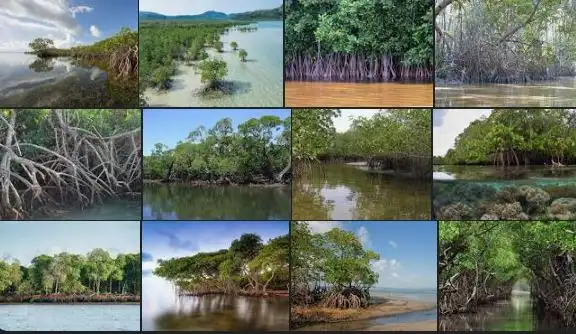
Recreate the beauty of a coastal mangrove forest within your aquarium. Utilize driftwood and tall, slender plants such as Rhizophora mangle and Avicennia marina to mimic the iconic appearance of mangrove trees. Enhance the realism by incorporating small figurines of crabs, birds, and other creatures found in this unique coastal ecosystem.
Exotic Coral Lagoon
Immerse yourself in the vibrant colors and intricate structures of a coral lagoon aquascape. Choose a variety of coral species, including branching corals, brain corals, and colorful soft corals, to create a diverse and visually captivating underwater landscape. Optimal lighting and water flow will ensure the health and vibrancy of your coral colony.
Conclusion
You have seen many beautiful aquascaping ideas that can make you more creative. You can choose any style you like, such as a calm garden, a colorful reef, or a magical forest. All you need is some tools, some ideas, and some fun. You can make a wonderful water world that will amaze you and others. Enjoy aquascaping!
Frequently Asked Questions (FAQs)
What is the rule for aquascape?
The rule for aquascaping is to create a visually pleasing and balanced underwater landscape within an aquarium. This involves using various elements such as plants, rocks, driftwood, and substrate to design a harmonious composition.
What items do you need for the aquascape?
The items you need for aquascaping include:
Aquarium: A suitable tank to house your aquascape.
Substrate: The material placed at the bottom of the aquarium, such as gravel or specialized aquatic soil.
Plants: Aquatic plants that provide aesthetic appeal and contribute to the ecosystem.
Hardscape: Rocks, stones, or driftwood are used to create structures and focal points.
Lighting: Proper lighting to support plant growth and showcase the aquascape.
Filtration: A filtration system to maintain water quality and provide a healthy environment for aquatic life.
CO2 System (optional): For plants that require additional carbon dioxide supplementation.
Water Conditioner: To treat tap water and remove chlorine or chloramine.
Aquascaping Tools: Tweezers, scissors, and other tools for planting, trimming, and maintaining the aquascape.What is the easiest aquascape style?
The easiest aquascape style for beginners is the “Nature Aquarium” style, popularized by Takashi Amano. This style emphasizes a natural and balanced layout, featuring a variety of plants, rocks, and driftwood. It is relatively forgiving for beginners and allows for creativity while maintaining a harmonious aesthetic.
What are the different types of aquascaping?
There are several different types of aquascaping styles, including:
Nature Aquarium: Aims to create a natural and harmonious underwater landscape, often mimicking landscapes found in nature like forests or mountains.
Dutch Style: Focuses on lush and colorful plant arrangements, typically using a variety of species and creating a vibrant and vibrant display.
Iwagumi Style: Characterized by the use of rocks as the primary focus, creating a minimalist and serene layout with an emphasis on simplicity and balance.
Biotope Aquascape: Seeks to replicate specific natural habitats, such as a river, lake, or coral reef, by using plants, fish, and other elements that are native to that specific ecosystem.
Paludarium: Combines underwater and above-water elements, incorporating plants and aquatic life in the water section, while also including a terrestrial area with plants and possibly small animals.
These different styles offer a range of aesthetics and approaches, allowing aquascapers to express their creativity and create unique underwater landscapes.

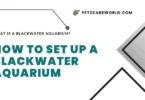
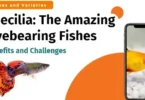
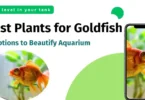
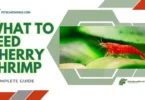

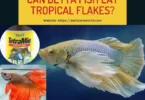
Leave a Comment
You must be logged in to post a comment.